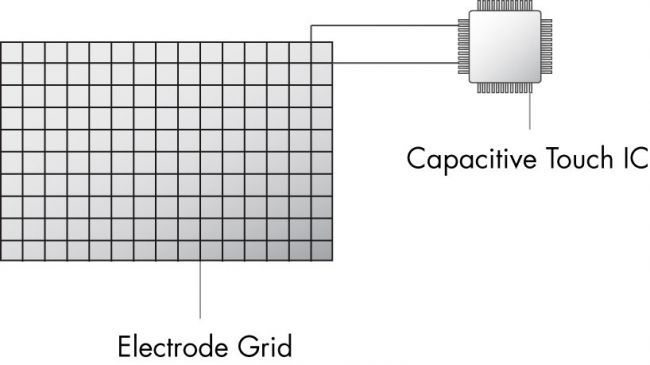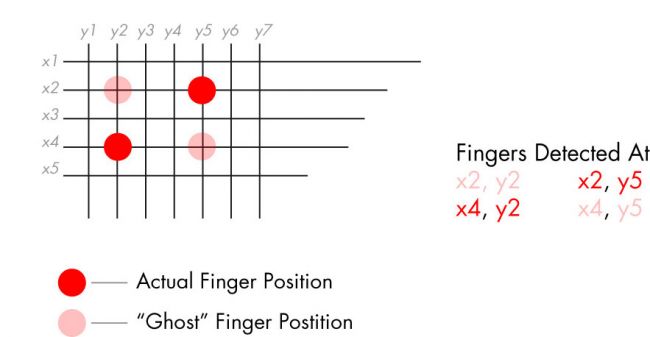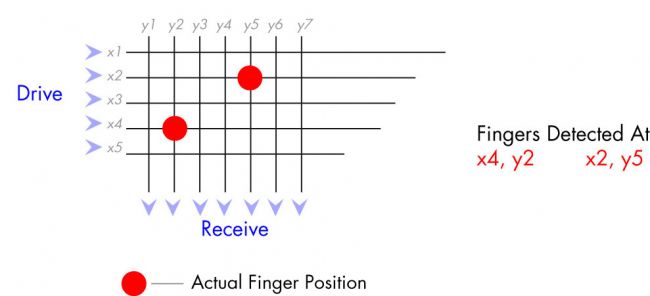Mutual Capacitive Technology
AN INTRODUCTION AND COMPARISON WITH OTHER CAPACITIVE SENSING METHODS
Introduction
In order to understand mutual capaci1ve touch we must explore the principle of capacitance.
Key Terms:
Conductor – Any material which conducts electricity.
Dielectric – Any material which does not conduct electricity.
Voltage – A measurement of electromo1ve force.
Electrode – Another term for a conductor, usually referring to part of a sensor.
Introduction to capacitance
Capacitance is basically defined as the ability of a pair of conductors to hold an electric charge. This pair of conductors is called a capacitor. When a voltage is applied across these conductors an electric field forms in the dielectric.
Example: Parallel Plate Capacitor

capacitive touch sensing
Since fingers are conductive objects, we can use this principle to track a finger based on how the finger changes the electrical field. In the case of touch panels, the conductors are two layers of electrodes on a touch sensor. The dielectric is the material of the sensor, and the air above the sensor:
Touch Sensor Side View

When a finger touches the surface of the sensor it introduces an addi1onal conductor and changes the capaci1ve value of the electrodes.
Touch Sensor Side View with Voltage Applied

By arranging the electrodes in an X, Y grid pattern and measuring these changes with a custom integrated circuit (IC) we can track the movement of the finger over the sensor.
Touch Sensor Top View

Self vs. mutual capacitance
Two systems for measuring capacitive touch are Self Capacitance and Mutual Capacitance.
These fall under the category of Projected Capacitance.
Self capacitance
Self capacitance measures each X, Y electrode pair on the grid individually. This works well for single finger tracking because single ac1ve X and Y electrodes can be easily correlated to the finger posi1on. When two fingers are present on the sensor, it is impossible to tell where along the active electrodes a finger is located. This results in "ghost" points.

Mutual capacitance
Mutual capacitance uses one axis of electrodes as drive while the other is used to receive or “sense”. Reduc1on in capacitance is measured between the drive and receive electrodes when a finger is present. Because the finger’s presence is measured as a change between a specific drive and receive electrode (rather then a change along an en1re single electrode as in self capacitance), multiple fingers can be detected with no ghost points.

Cirque strives to create innovative touch input solutions that improve the interface between humans and technology. Founded in 1991, Cirque is the original developer of capacitive touchpad solutions for laptop computers. We have built on GlidePoint, the original capacitive touch sensor technology, and now offer a complete range of touch input solutions. Cirque technology provides solutions that are durable, versatile and feature cutting edge touch input capability.
